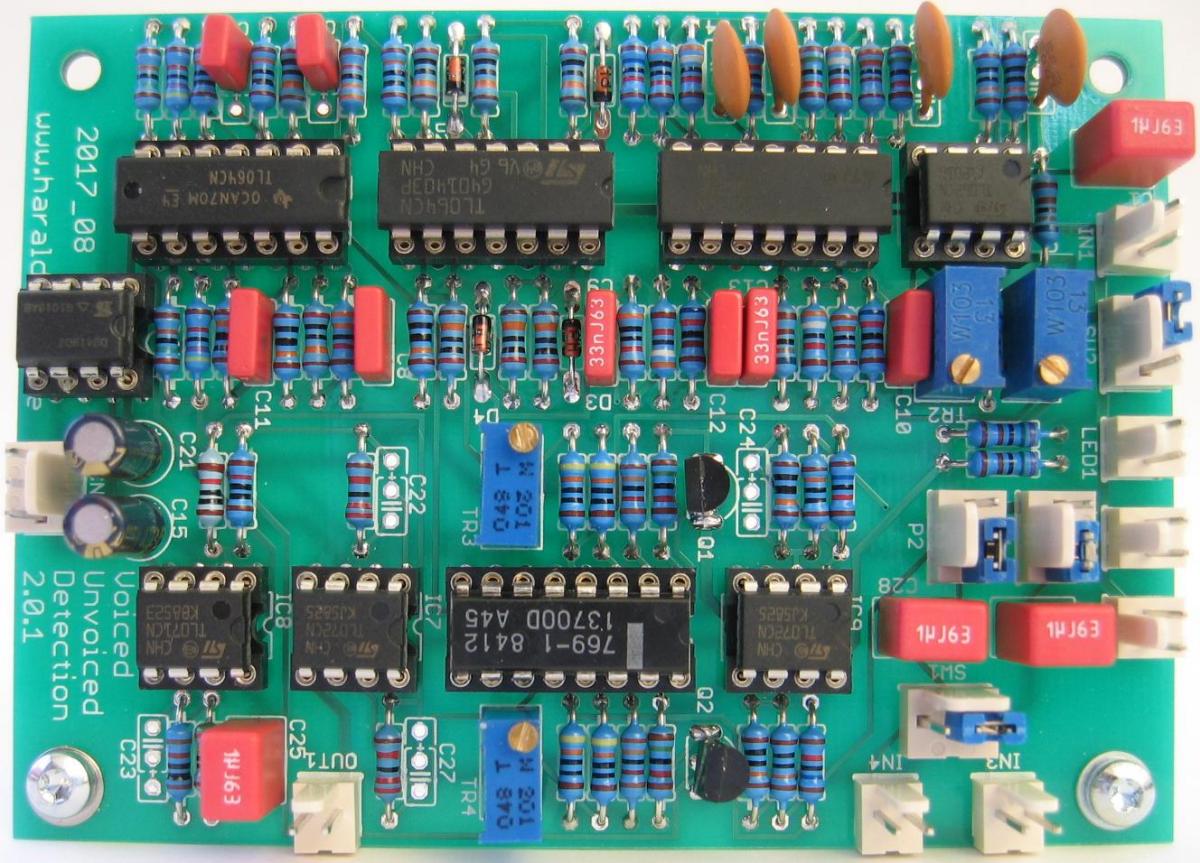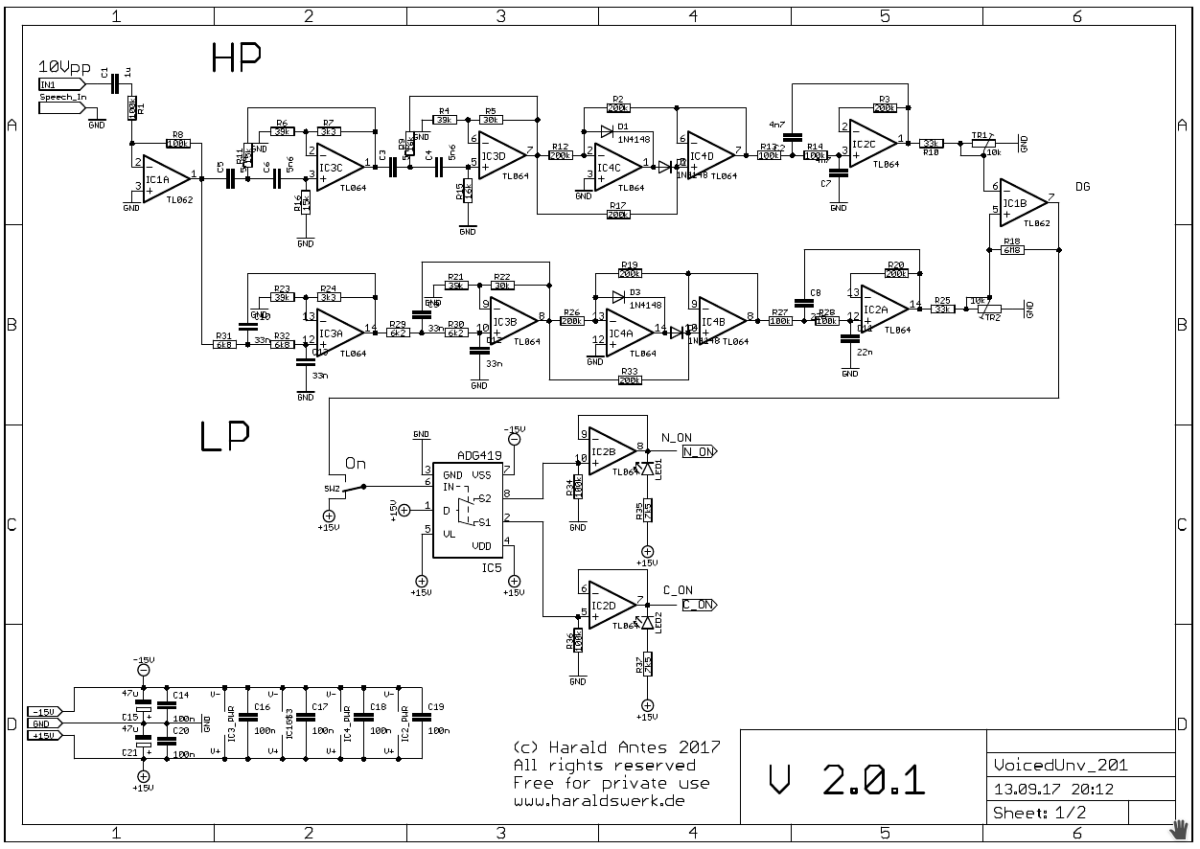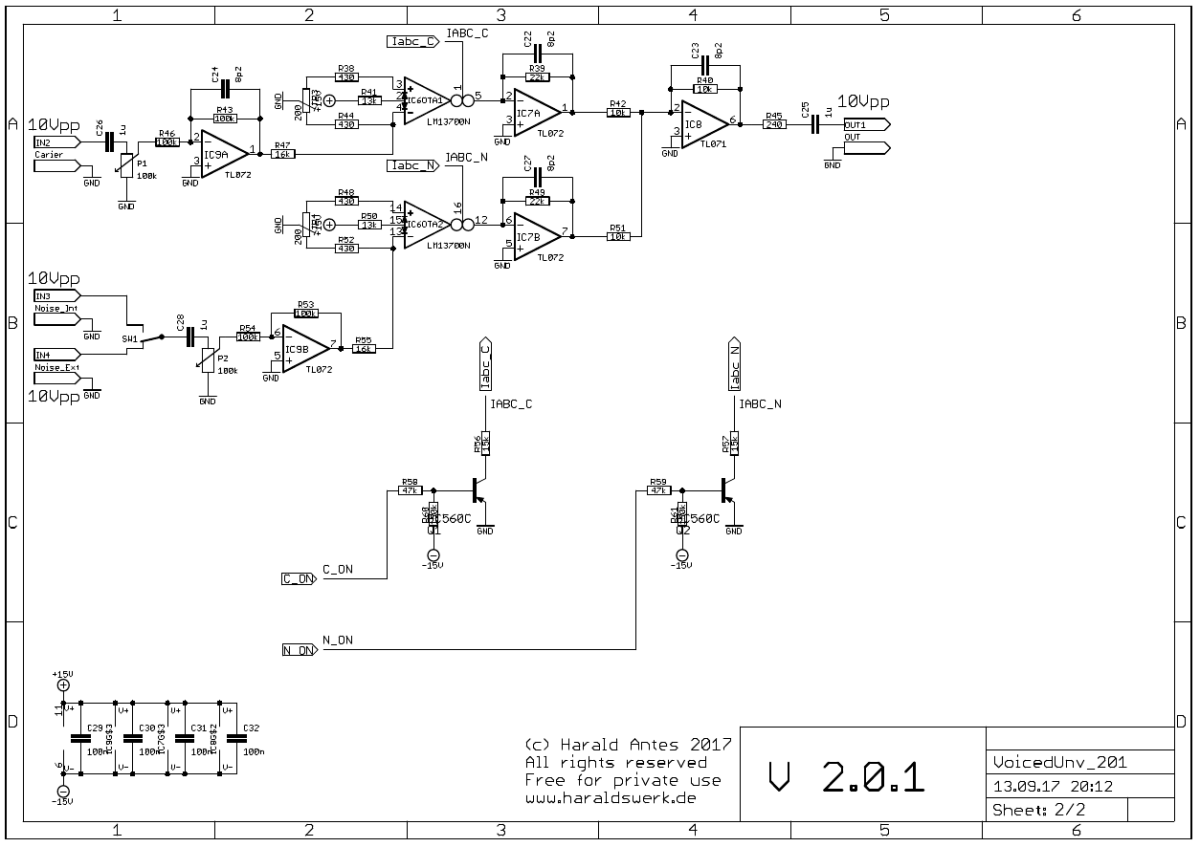
NGF Vocoder : Voiced – unvoiced detection PCB
Here is the voiced – unvoiced detection module for my Vocoder project. It is made off a high pass and a low pass filter. The outputs of the filters are compared. The comparator switches the output signal between carrier and noise.
The documentation for download can be found in my website.

NGF Vocoder project: Voiced – unvoiced detection schematic 01
The speech input signal derived from the speech input module initially reaches the buffer IC1A and is then split into two signals, each passing a filter. The high pass filter is constructed around IC3C and IC3D and the low pass around IC3A and IC3B. Their peak values are at 2500Hz and 600Hz respectively. The high pass filter is a Sallen Key filter, highly damped, gain around 5.6 dB. The low pass filter is constructed accordingly. Both filter sections have a slope of 24dB per octave to obtain a good separation. They are each followed by a precision full wave rectifier (IC4C, IC4D and IC4A, IC4B) and by a 12dB per octave smoothing filter. The rectified and calibrated filter output signals are now feed to a comparator IC1B. The voiced – unvoiced decision is taken by the comparator according to the signal levels. The comparator output steers the switch IC5 which selects if the carrier or the noise signal is send to the output.

NGF Vocoder project: Voiced – unvoiced detection schematic 02
The carrier and the noise input are both fed to OTA’s. The carrier input is buffered with IC9A, the noise input with IC9B. The noise input is switchable between internal and external source. The OTA’s are turned on or off according to the signal from switch IC5 (schematic page 01).
